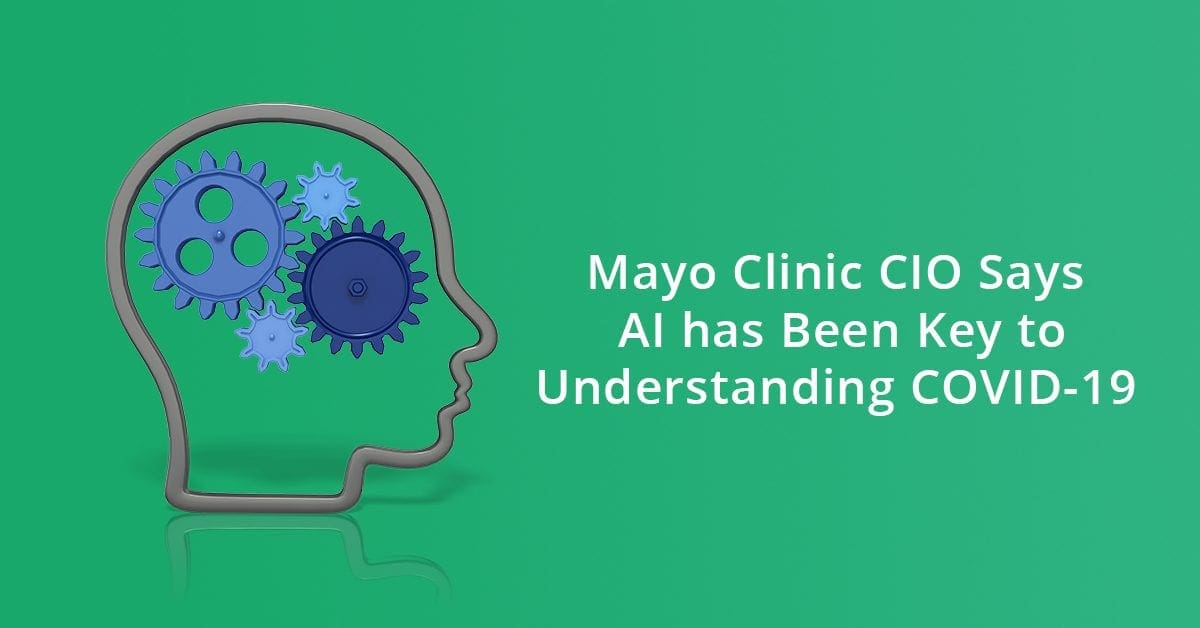Call us toll-free: 800-878-7828 — Monday - Friday — 8AM - 5PM EST

By Mike Miliard for Healthcare IT News
In his opening keynote Tuesday at the HIMSS Machine Learning & AI for Healthcare Digital Summit, Mayo Clinic CIO Cris Ross enumerated some of the many ways artificial intelligence has been crucial to our evolving understanding of COVID-19.
Way back in March, for instance, researchers were already using an AI algorithm – trained on data from the 2003 SARS outbreak – for “a recurrent neural network to predict numbers of new infections over time,” he said. “Even from the beginning of COVID-19, artificial intelligence is one of the tools that scientists have been using to try and respond to this urgent situation.”
And just this past month, Boston-based nference – whose clinical-analytics platform is used by Mayo Clinic – sifted through genetic data from 10,967 samples of novel coronavirus. Along the way, researchers discovered “a snippet of DNA code – a particular one that was distinct from predecessor coronaviruses,” said Ross. “The effect of that sequence was it mimics a protein that helps the human body regulate salt and fluid balances.
“That wasn’t something that they went looking for,” he said. “They simply discovered it in a large dataset. It’s since been replicated and used to support other research to discover how genetic mutations and other factors are present in COVID-19 that help, both with the diagnosis of the disease, but also its treatment.”
Many other now commonly understood characteristics of the novel coronavirus – the loss of smell it can cause, its effects on blood coagulation – were discovered using AI.
Around the world, algorithms are being put to work to “find powerful things that help us diagnose, manage and treat this disease, to watch its spread, to understand where it’s coming next, to understand the characteristics around the disease and to develop new therapies,” said Ross. “It’s certainly being used in things like vaccine development.”
At the same time, there are already some signs that “we need to be careful around how AI is used,” he said.
For example, the risk of algorithmic bias is very real.
“We know that Black and Hispanic patients are infected and die at higher rates than other populations. So we need to be vigilant for the possibility that that fact about the genetic or other predisposition that might be present in those populations could cause us to develop triage algorithms that might cause us to reduce resources available to Black or Hispanic patients because of one of the biases introduced by algorithm development.”
The profusion of data since the pandemic began has allowed advanced models to be purpose-built at speed – and has also enabled surprise findings along the way.
Sure, “some of the models that are being built that are labeled AI are really just fancy regression models,” said Ross. “But in a way, does it really matter? In any case, [they’re] ways to use data in powerful ways to discover new things, … drive new insights, and to bring advantages to all of us dealing with this disease.”
It’s notable too that the big datasets needed for AI and machine learning “simply didn’t exist in the pre-electronic health record days,” he added.
“Just imagine where we would have been if it was a decade ago and we were trying to battle COVID-19 with data that had to be abstracted from paper files, … manila folders, and a medical records room someplace,” said Ross.
“The investments we’ve made to digitize healthcare have paid off. We’ve learned that the downstream value of data that’s contained in electronic health records systems is incredibly powerful.”
